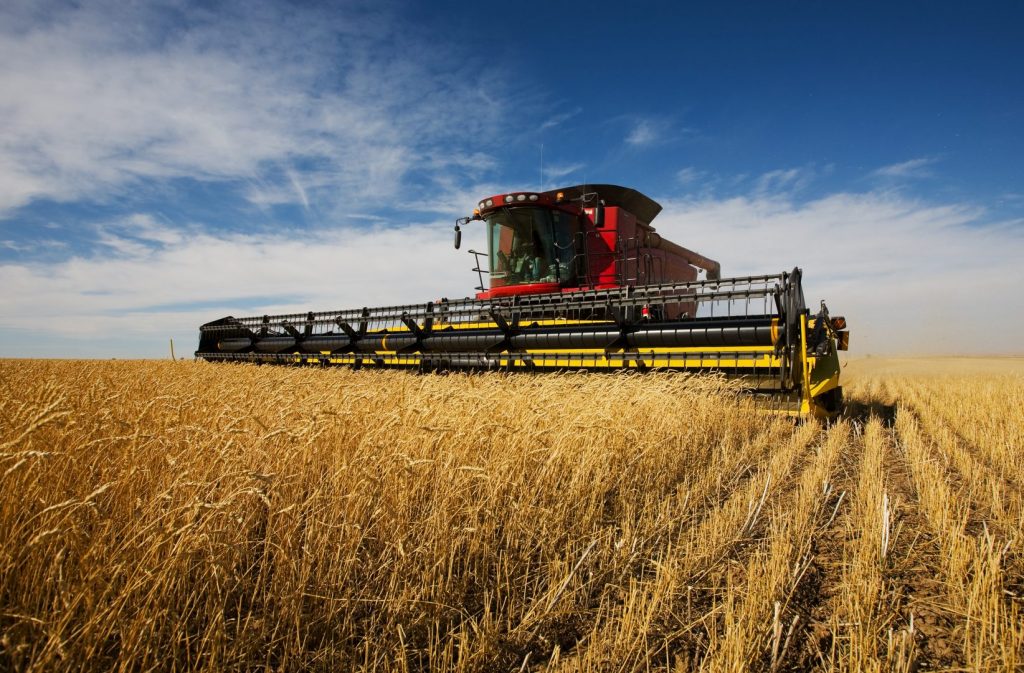
Regardless of the fruits or vegetables grown, harvest time is when we get to recognize the results of the growing season and all of the hard work and effort that went into it
October is known as harvest time although we can harvest fruits, vegetables, and crops at other times of the year as well. One reason October – or at least the fall – is known as the time of harvest is because of the growing season that is required from the spring planting until the crops are ready to be gathered from the fields. Some fruits are harvested nearly year-round, but the traditional harvest time is the fall.
We have fall festivals to celebrate the harvest. We have Halloween. Homes and businesses are decorated with pumpkins, corn stalks (and corn), hay bales, squash, apples, and other foodstuffs to commemorate the harvest and the celebrations associated with them.
The one constant with the harvest is that it cannot happen – regardless of what time of year that it is – without putting seeds in the ground or tending to trees and vines that produce fruits and nuts. There is a preparation time for getting the soil ready or inspecting the trees and vines. There is a planting time. There is a nourishing time with fertilizer, plant food, water, and other nutrients to help the crops grow and withstand pests and harsh weather conditions (drought, heat, hail, wind, and frost).
Many of us have fruit or nut trees in our yards or vegetable gardens that we plant when the climate is right for them (this varies depending on where we live and the number of growing days per season). We go through the same routines as the farmers except on a much smaller scale and in an abbreviated fashion. Also, we don’t have our livelihoods depending on a crop that we take to market.
Nevertheless, many of us have personal experience with what it takes to produce foodstuffs from seed, seedlings, or cuttings, and we understand how moisture, nutrients, pests, and weather conditions can affect the crops that we see at harvest. Sometimes, the crops are virtually destroyed by insects and foraging animals, sometimes the heat scorches them, sometimes the rain is too abundant and the crops suffer, and sometimes hail or frost damages the crops before they are ready for harvest.
The life cycle of growing and harvesting fruits, vegetables, flowers, and other plant materials is not unlike the aging process we all experience. At a young age, we begin making plans for our future by completing our education and getting that first professional position. Some of us remain in that career long-term, and others change positions and even careers several times throughout their working lifetimes.
We form relationships and friendships, and we join organizations, clubs, and causes. We rent that first home or apartment, or we go all in with a home that we decide to purchase rather than rent.
Over the years, we may move from home to home (rentals or ones that we own) and from one city or town to another or more than one. Eventually, we find a home and a location that works for us and that we like well enough that we decide – consciously or by default – that this is our long-term or forever home that we will remain in and begin to age in place. We no longer need to actively look for another place to live. We have found the home we want.
Interestingly, the number of people remaining in their homes has continued to increase. AARP reports that some nine-out-of-ten (nearly everyone) over 65 wants to remain in their current home. NAHB reports that the average tenure for an owner-occupied home is in excess of thirteen years which means that half of all owners have lived in their current homes at least that long – some considerably longer.
So, how is successful aging in place like the fall harvest we are experiencing now or have recently seen this season? As we just looked at, the crops take time to mature. We don’t just plant a seed or wish a finished fruit or vegetable into existence. It takes time for them to absorb the water and nutrients, to use the sun to grow, to rest between growing cycles, and to become the mature product that we are expecting. Similarly, we don’t end up in living in a home that fails to meet our needs, that we don’t like, or that we don’t feel safe living in.
Over the years of living in other dwellings, we learn what to look for as we search for the next home and then the next – whether that is just a couple of homes or several during a lifetime. We find a home that we like and we perform regular maintenance on it to keep in in good running order. We change appliances and systems as needed. We make minor (sometimes major) improvements and renovations. Then we get to the point when we can enjoy the harvest – the end product of our hard work and diligence in preparing our homes to serve us for the rest of our lives.
